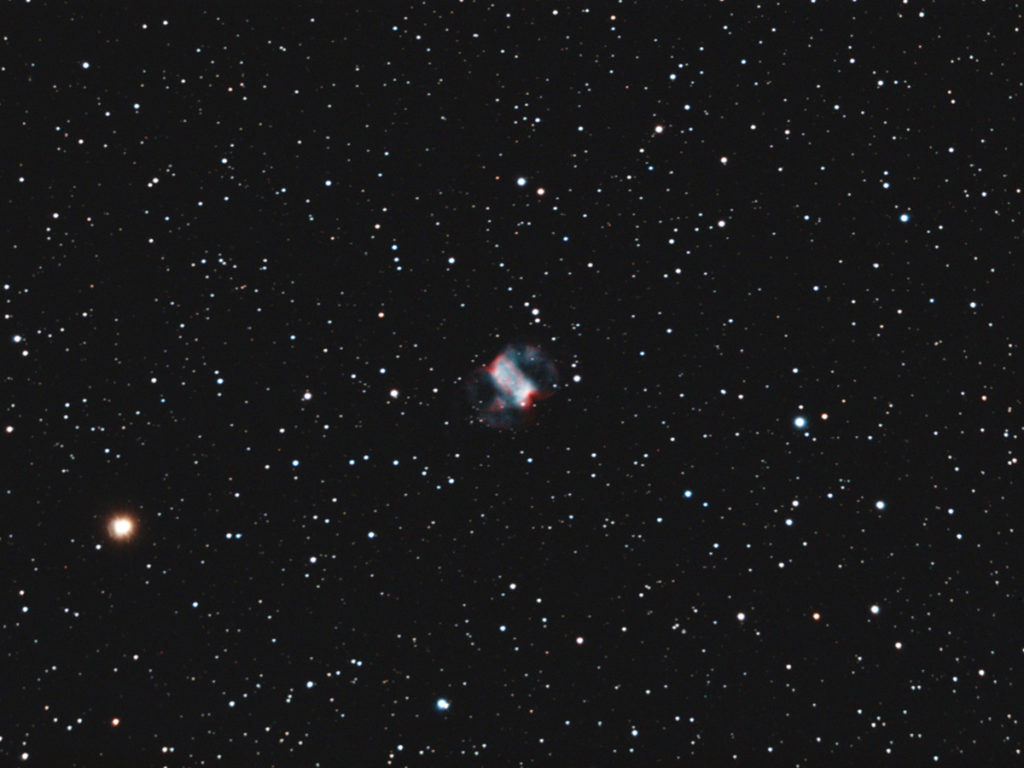
Telescope: Meade 12” LX850 ACF @ f/8, Orion Atlas EQ-G
Camera: ZWO ASI071 MC Pro, -10C, Gain 200
Filter: Orion Imaging Skyglow Filter
Guide scope: Astro-Tech 60mm, ASI290MM Mini, PHD2
Exposure: 31x240sec, saved as FITS
Darks: 32x240s, saved as FITS
Flats: 32x1sec, Tee shirt flats taken at dawn
Average Light Pollution: Red zone, Bortle 8, poor transparency
Lensed Sky Quality Meter: 18.3 mag/arc-sec^2
Stacking: Mean with a 2-sigma clip.
White Balance: Nebulosity Automatic
Software: Nebulosity, Deep Sky Stacker, Photoshop
M76 is a modest size planetary nebula in Perseus. This type of nebula forms near the end of a star’s life when the core collapses, setting off an explosion that blows off the star’s outer shell forming a bubble that can take the form of a great variety of shapes. In this example the central bar is thought to be a ring seen nearly edge-on and this relatively bright bar is the only part that is readily visible in a modest size telescope. Visually, the central bar shows two lobes that appear similar to M27, the Dumbbell Nebula in Vulpecula, and M76 is often referred to as the Little Dumbbell.
Recent Comments